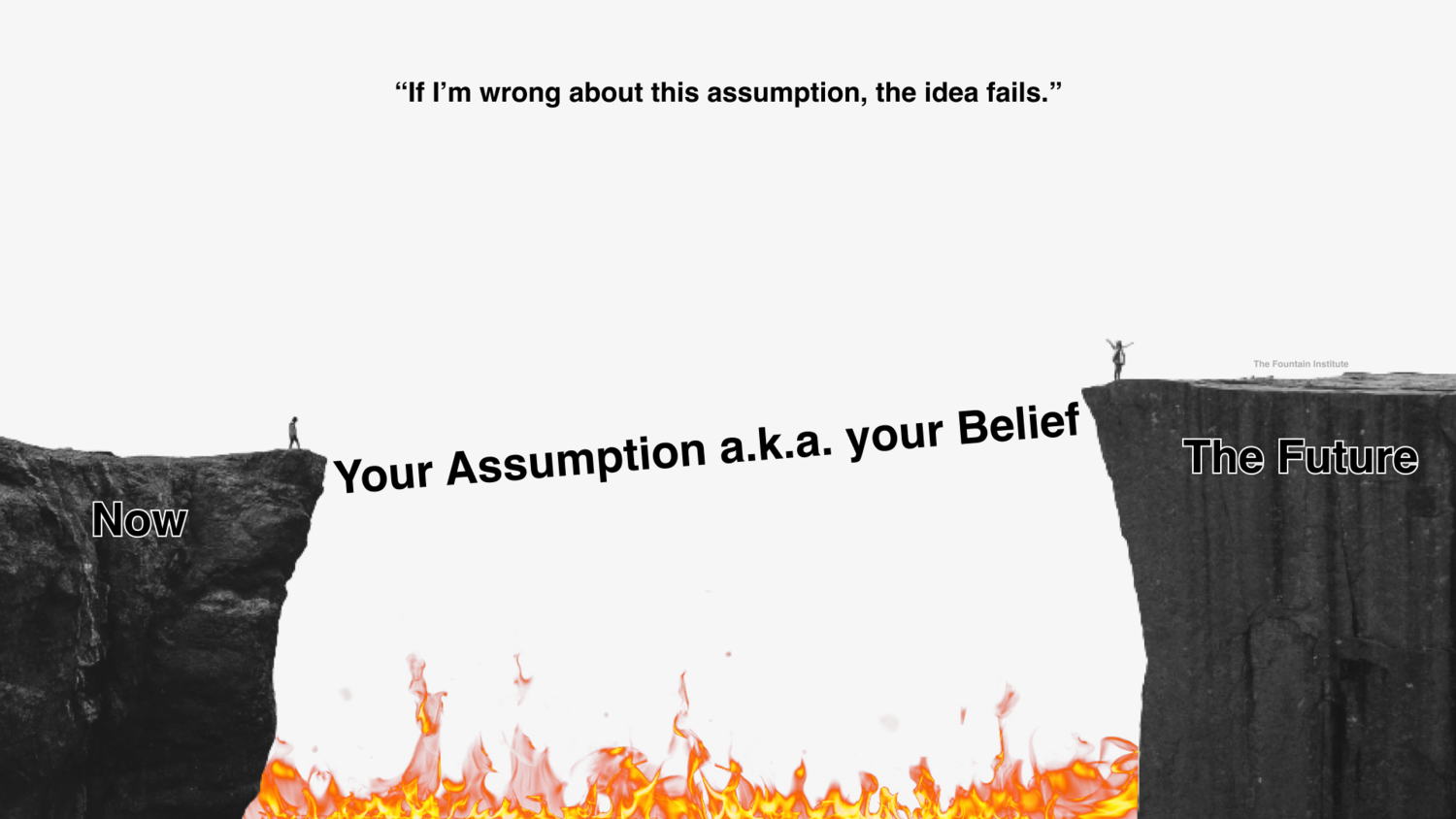Test Assumptions, Not Ideas.
Q: How do I get started with testing & experiments?
Dear Reader,
I've been talking a lot about experiments, lately, and maybe you'd like to dip your toe in the water?
There's a very important first step you should take that may not be obvious if you're new to experiments.
It's especially important to designers that fall in love with their solutions.
Test assumptions, not ideas.
Hidden beneath every idea are giant assumptions about how something will go. It turns out humans are terrible at predicting the future so we fill in the gaps with assumptions.
Testing assumptions helps us avoid confirmation bias and forces us to think critically about the details of an idea that we might skip if we're excited about an idea.
Product ideas that make sense on paper can fail if they don't understand the realities of messy humans in a chaotic world.
 |
In design school, we are taught to follow the brief without question, but briefs are full of assumptions.
Questioning the assumptions within ideas can sometimes feel like a “buzzkill” when the team is on a creative high, but every idea is an assumption until it’s in the hands of a customer.
Because assumptions are beliefs, they’re not always easy to identify. Assumption Hunting™️ is how you find hidden beliefs within product ideas, and it’s best done with other people.
Upcoming Live Courses
|
COURSE: Defining UX Strategy COURSE: Facilitating Workshops |
Methods like Assumption Mapping can help you identify the risks with your team.
 |
When you're working in highly uncertain environments like on innovation teams, opinions mean nothing.
Only the evidence behind the ideas matters, and that evidence should come from the customer or research, not the HiPPO (highest paid person’s opinion).
Assumptions are everywhere, but that doesn't mean finding them will be easy.
Sometimes, you have to simulate the idea to reveal the assumption.
Paper prototypes, storyboarding, and journey mapping can also help you recognize gaps and areas where your team is making assumptions...
Read the full article on the blog→
Until next week, start hunting down those assumptions!
Jeff Humble
Designer & Co-Founder
The Fountain Institute
P.S. If you want to dive deeper into assumption testing, check out this FREE 60-minute video on how to design product experiments from last Saturday's webinar:
Watch the Video→
The Fountain Institute
The Fountain Institute is an independent online school that teaches advanced UX & product skills.
What Can't AI Do in Design in 2026 By Hannah Baker Dear Reader, If you work in design, your feeds are probably saying the same two things on repeat: Here’s everything AI can do for you, and Here’s why you should be terrified. Most of that conversation focuses on tools and job titles: “Will designers be replaced?” “Which roles are safe?” It makes for good headlines, but it’s not how the work actually changes in real life. A few months ago, walking to my studio listening to a Planet Money...
Does the Double Diamond make sense for AI-enabled teams? by Jeff Humble Dear Reader, For twenty years, the Double Diamond has been our north star. Discover, Define, Develop, Deliver. It's elegant. It's teachable. It's in every junior's UX case study. And it made sense…when it was created. All that upfront research made economic sense when coding was the most expensive part of the process. Better to get it right before handoff because it's expensive for engineering to make changes later. But...
When Frameworks Fail and Gut Feelings Take Over By Hannah Baker Dear Reader, You know that moment when the data looks clear, the framework is airtight, and yet something in your stomach says, don’t do it? That’s judgment, the quiet, inconvenient voice that shows up when the evidence has already spoken. It’s also the thing most of us struggle to explain, even though our careers depend on it. Businesses love reasoning. We build frameworks to make decisions look rational, dashboards to make them...